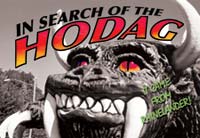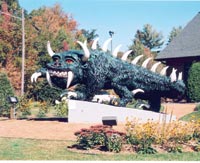 |
||||
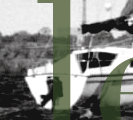 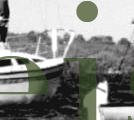 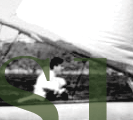 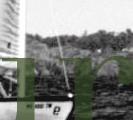  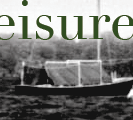 |
||||
|
In search of the Hodag It was a beautiful fall day, the air unseasonably crisp and the leaves on the trees seasonably colored. My mother and I were side by side in her black Volvo station wagon, returning for the first time in ten years to a place of both our childhoods: Rhinelander. While Rhinelander is a typical small northwoods town in many ways, to us it's more than a dot on the map. To me it means being incredibly bored at my grandparents’ log cabin, no running water, bunk beds that smelled like musk and mucky Loon Lake. To my mother, it means her childhood summer “vacation,” her five siblings, pets and friends stuffed into a packed station wagon, spending a week equally contained in the two-room cabin as it inevitably poured rain. Beyond our personal experiences, Rhinelander had something else no other small town can claim, the Hodag. It was the Hodag, Rhinelander’s most famous hoax, that was leading me back to a place and a time that no longer exists. Unlike the impersonal metropolises that litter the country, small towns often rally around the cherished histories that cement their identities and reasons for being. Small town pride, similar to intense radical patriotism, is exemplified in rivalries between high school football teams and screaming matches over blue-ribbon rhubarb pie at county fairs. Rhinelander, with its population of 7,873, is no different. But for this small town its “special sauce” is something that never even existed, except in the minds of many persuaded by a pile of ox hide and bull horns that the fierce Hodag beast did indeed live. The Hodag was just one part of the business elite’s plan to help the community survive in the late 1800s. Like many Wisconsin northwoods towns, Rhinelander was foundid mainly by its logging industry. Many similar communities were in crisis during this period, as their once seemingly endless supplies of pine and hemlock were rapidly depleted. It was a matter of sinking or swimming as towns scrambled to find other industries and methods of money-making and Rhinelander was determined to swim - with a little help from a made-up creature. In 1893, Eugene Shepard, a local prankster and timber cruiser began spreading his tales of the Hodag around the community. It was described as “the fiercest, strangest, most frightening monster ever to set razor sharp claws on the earth.” In other words, it looked like a mix between a bulldog and a dragon. Curiously, it was believed that the Hodag would eat white bulldogs, but only on Sundays. In a clever pre-public relations measure, Shepard rounded up a band of brave locals to capture the monster and photograph the event, proving to all not only the beast’s existence but the strength of Rhinelander folk. Such a task did not prove easy, as the group resorted to dynamite to kill it. The photograph of charred Hodag remains, along with Shepard and his crew, was published and the tale of the Hodag was born. Three years later, Shepard captured another Hodag; this time he left it alive but sedated. Unveiled at the first Oneida County Fair, this Hodag was to spend the rest of its years on display at county fairs and in a shack at Shepard’s home. Thousands came to see the Hodag, and despite the eventual admission by Shepard that the Hodag was indeed a hoax, Hodag fervor caught on in the town of Rhinelander and helped secure the community’s future. Entirely unique and rooted in the legacy of its survival, Rhinelander has willingly adopted the strange, supposedly frightening - but to some “adorable” - beast as its mascot. Rhinelander, in promotional materials and the minds of residents alike, is known as “The Home of the Hodag.” Its streets are littered with locally-owned stores named after the beast, such as the charming Hodag Gun and Loan, and at local sporting events one can see the youth of Rhinelander confront their opponents as the fearless Hodags. A gargantuan Hodag statue greeted us as we made our first stop in Rhinelander at the Chamber of Commerce. It looked a little silly—this huge, green monster with glowing yellow and red eyes positioned in front of the homey country-style building. Still, it was a message to everyone who drove on Business Highway. 8 that they were entering the town of Rhinelander. The Hodag’s influence extends beyond its home’s borders. It has been recognized in places as far away as London and has graced Jim Morrison’s grave in Paris. The Hodag is a marker to everyone, worldwide, of something from a small town in northern Wisconsin. |
||
|
|
|||
|
|||
|
|||
|
|||
